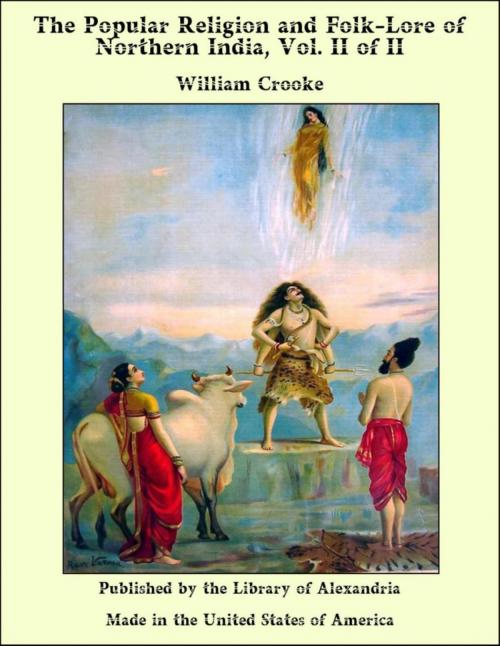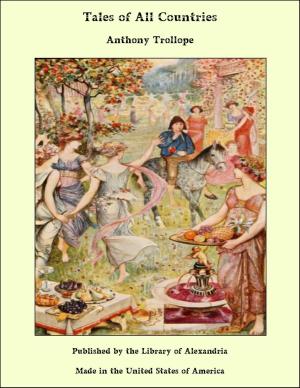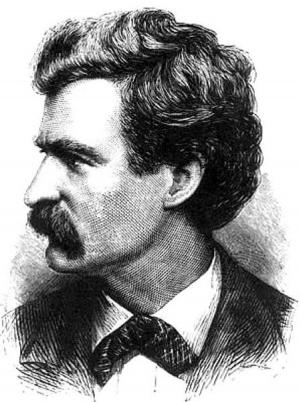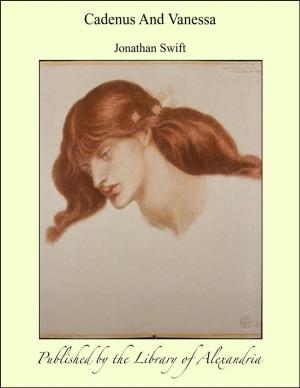The Popular Religion and Folk-Lore of Northern India, Vol. II of II
Nonfiction, Religion & Spirituality, New Age, History, Fiction & Literature| Author: | William Crooke | ISBN: | 9781465585387 |
| Publisher: | Library of Alexandria | Publication: | March 8, 2015 |
| Imprint: | Language: | English |
| Author: | William Crooke |
| ISBN: | 9781465585387 |
| Publisher: | Library of Alexandria |
| Publication: | March 8, 2015 |
| Imprint: | |
| Language: | English |
The belief in the baneful influence of the Evil Eye prevails widely. According to Pliny, it was one of the special superstitions of the people of India, and at the present day it forms an important part of the popular belief. But the investigation of its principles is far from easy. It is very closely connected with a number of kindred ideas on the subject of diabolical influence, and few natives care to speak about it except in a furtive way. In fact, it is far too serious a matter to be discussed lightly. Walking about villages, you will constantly see special marks on houses, and symbols and devices of various kinds, which are certainly intended to counteract it; but hardly any one cares directly to explain the real motive, and if you ask the meaning of them, you will almost invariably be told that they are purely decorative, or that they have been made with some object which obviously conceals the real basis of the practice. One, and perhaps the most common theory of the Evil Eye is that “when a child is born, an invisible spirit is born with it; and unless the mother keeps one breast tied up for forty days, while she feeds the child with the other (in which case the spirit dies of hunger), the child grows up with the endowment of the Evil Eye, and whenever any person so endowed looks at anything constantly, something will happen to it.” So, in Ireland we are told that “the gift comes by Nature and is born with one, though it may not be called into exercise unless circumstances arise to excite the power; then it comes to act like a spirit of bitter and malicious envy that radiates a poisonous atmosphere, which chills and blights everything within its reach.”
The belief in the baneful influence of the Evil Eye prevails widely. According to Pliny, it was one of the special superstitions of the people of India, and at the present day it forms an important part of the popular belief. But the investigation of its principles is far from easy. It is very closely connected with a number of kindred ideas on the subject of diabolical influence, and few natives care to speak about it except in a furtive way. In fact, it is far too serious a matter to be discussed lightly. Walking about villages, you will constantly see special marks on houses, and symbols and devices of various kinds, which are certainly intended to counteract it; but hardly any one cares directly to explain the real motive, and if you ask the meaning of them, you will almost invariably be told that they are purely decorative, or that they have been made with some object which obviously conceals the real basis of the practice. One, and perhaps the most common theory of the Evil Eye is that “when a child is born, an invisible spirit is born with it; and unless the mother keeps one breast tied up for forty days, while she feeds the child with the other (in which case the spirit dies of hunger), the child grows up with the endowment of the Evil Eye, and whenever any person so endowed looks at anything constantly, something will happen to it.” So, in Ireland we are told that “the gift comes by Nature and is born with one, though it may not be called into exercise unless circumstances arise to excite the power; then it comes to act like a spirit of bitter and malicious envy that radiates a poisonous atmosphere, which chills and blights everything within its reach.”















